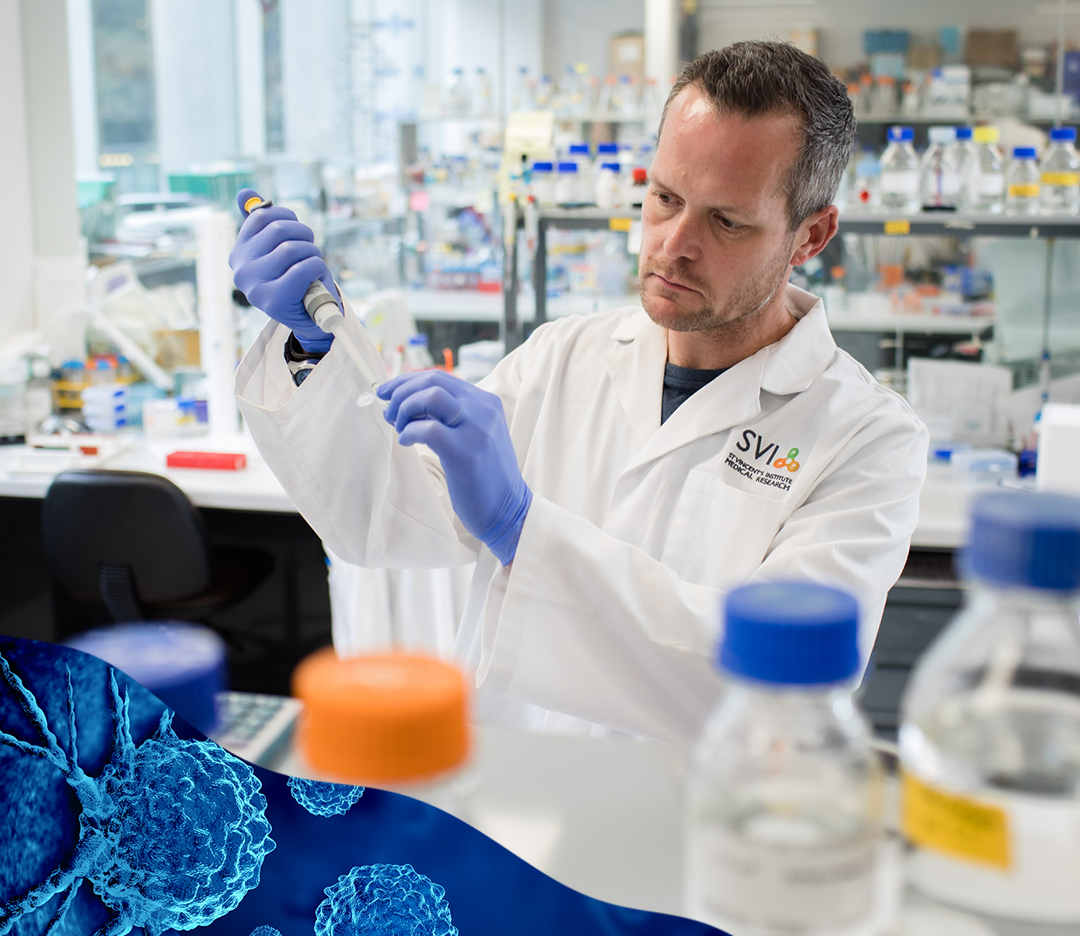Posted 25 March 2025

SVI scientists have recently made an important discovery about how cells grow and handle stress, which could lead to new ways to treat cancer.
Cells control their growth using two proteins called AMPK and mTORC1 that work together in a feedback loop.
Kind of like a thermostat regulating the temperature in a house, says Associate Professor Jon Oakhill, Head of SVI’s Metabolic Signalling Laboratory.
“When it gets too hot or too cold, the thermostat adjusts. Similarly, these two proteins adjust cell growth based on the nutrients available, making them grow at the rate they are supposed to.”
Jon’s study shows that mTORC1 does more than just turn off AMPK—it also changes parts of the protein itself, affecting how cells react to the nutrients they get.
Using advanced tools, researchers found seven areas on AMPK that mTORC1 affects, including two key spots that directly influence AMPK.
“When mTORC1 changes one of these spots, it’s like turning up the heat on the thermostat, making the cell grow faster even when under stress and changing how the cell handles energy, which is linked to cancer growth,” said Jon.
This discovery shows mTORC1 influences AMPK in more ways than scientists thought before.
“This new understanding could help us find ways to target cancer cells by messing with their energy balance, offering new paths for cancer treatment,” said Jon.
The paper is published in Nature Metabolic Health & Disease.
This work was supported by grants from the National Health and Medical Research Council, the Australian Research Council, the Jack Brockhoff Foundation and Maddie Riewoldt’s Vision, a Flinders Foundation seeding grant and Flinders University. This study was supported in part by the Victorian Government’s Operational Infrastructure Support Program.
Find out more about our Metabolic Signalling Lab